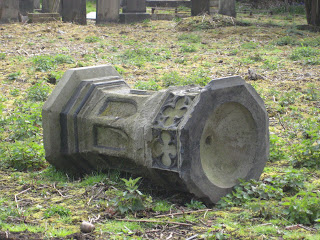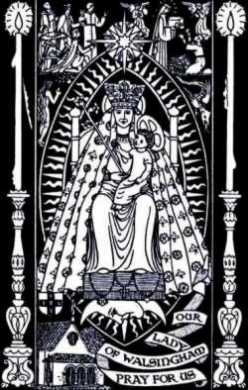
The North face.
 Outside of the Sanctuary.
Outside of the Sanctuary. The Barton Bridge.
The Barton Bridge.The West Rose window.
Detail on the bellcote.
Frieze at the east end.
East End.
I saw this old font on the graveyard ground.
 Corbal at the west end.
Corbal at the west end.To the West of Manchester, just set in the outer ring road of the M60, is Dumplington, where the sewage works have been for many years, thus rendering the surrounding Chat Moss incredibly fertile and ideal for the cultivation of herbs and salads, which it is used for up to the present day. Dumplington is also site of the Trafford Centre, an unimaginably large shopping centre which to my eye looks hideous but to most people is an architectural wonder, this leads to the BArton Bridge, once one of the main canal routes for goods into the docks at Salford Quays and Trafford Park, not so long ago one of Europes great industrial ports, now mainly overpriced flats and silly pubs, along with a multitude of office blocks full of businesses which rely on the computer. There is also a deal of heavy industry and the Lowry Centre, as well as the estates of very poor housing synonymous with such areas, namely Ordsall and Langworthy. Ordsall is currently looking for a new Vicar, if anyone wants to test their calling to urban ministry in deprived areas.
Anyway, back at the Barton Bridge. This is a swing bridge although it swings a lot less now than it used to, due to the lamentable decline in barges and ships going to the docks. Towering over the bridge is the Franciscan Friary of All Saints, built by Edward Pugin as a parish Church and mausoleum for Sir Humphrey De Trafford between 1862 and 1865. It was left derelict until the Franciscans took it over in 1962 and money was raised for a total renovation, begun in 1981 and finished in 1987. This left a beautiful Church, Friary and a publishing centre for a local Catholic magazine. To great sorrow and, if rumours be told, shame, dry rot invaded the building a second time a few years after the work was completed and the Church is now, once again, closed.
The inside hides a fine High Altar, topped by a Benediction Throne over the tabernacle, with a stand for the monstrance made from standing angels holding a stone, flanked by two tall white alabaster angels carrying a crown aloft which would hover over the monstrance. The floor throughout is tiled in Minton tiles bearing the De Trafford monogram. The other noteworthy feature is the mural in the sanctuary showing Bishops, Clergy, Nuns and patrons kneeling before the lamb of God. Noticeable amongst them is the Architect, in clerics, holding the plans of the Church. Alas, this is not to be seen, or anything else in the Church, but do look at the bellcote, or spire, outside, this was taken down and restored in the last restoration and in my opinion is the great feature of the building. Having a little time to spare today and finding myself outside, I thought I might have a look. I hope you like the pictures.


















_Black_s_s_s_s_s.jpg)
